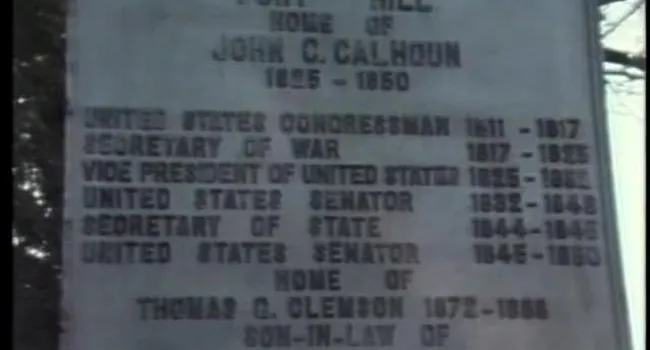The Reconstruction period will perhaps always be one of the most controversial in South Carolina's history. In this lesson we use a number of vignettes tied together, by the host, to present various views and events of the times. These include:
- An incident at Trinity Episcopal church in Columbia
- Though the Emancipation Proclamation had been in eflect since 1863, its full effect wasn't felt until the end of the war. Most southerners. both black and white, were not prepared to deal with this.
- Term "carpetbagger" formed
- Corruption ran rampart in state government.
- Native white South Carolinians who sided with the new regime were referred to as "scalawags."
- Introduction to Robert Smalls
- The "Red Shin Campaign" arose
- Voter polls - eligibility requirements
BACKGROUND: "There was probably no more a trying period in South Carolina's history than the years 1865-1877. The people were exhausted by the war, stunned by defeat, and overwhelmed by the political confusion arising out of the Reconstruction. Actually, the social, economic, and political changes that followed the war shook South Carolina to her depths.
Reconstruction fell into two periods: (l) Presidential Reconstruction, 1865-68, and (2) Radical Reconstruction, 1868-77. All ex-Confederate states went through some form of Reconstruction. But only in South Carolina, Louisiana, and Florida did reconstruction last until 1877. By contrast, reconstruction in Virginia, North Carolina, and Tennessee was brief and not nearly so violent and tragic."
Reference: The History of South Carolina in the Building of the Nation, Archie Vernon Huff, Jr. and Alester G. Furman, lll, 1991 , pp.277-291.
Standards
- 4.5.CX Contextualize the economic, labor, political, and social conditions in South Carolina during the period of Reconstruction.
- 4.5.E Analyze multiple perspectives of the economic, political, and social effects of Reconstruction on different populations in the South and in other regions of the U.S.
- 8.4.CX Evaluate South Carolinians’ struggle to create an understanding of their post-Civil War position within the state, the country, and the world.
- This indicator was developed to encourage inquiry into how the former planter class, African Americans, women, and others adjusted to, gained, lost, and/or regained position and status during Reconstruction. This indicator was also written to foster inquiry into how South Carolina worked with a stronger federal government and expanding international markets.
- 8.4.CC Analyze continuities and change in the African American experience in the period of Reconstruction and Jim Crow eras within South Carolina.
- This indicator was developed to encourage inquiry into the successes and failures of Reconstruction, beginning with the Port Royal Experiment, in South Carolina. This indicator was written to explore development of the Constitutions of 1868 and 1895 and to analyze the evolution of restrictions for African Americans from the Black Codes in 1866 through the Plessy decision in 1898.
Resources
You need to be logged in to listen to view this content. Create an account now; it's quick, easy, and free!
Log In to View









































